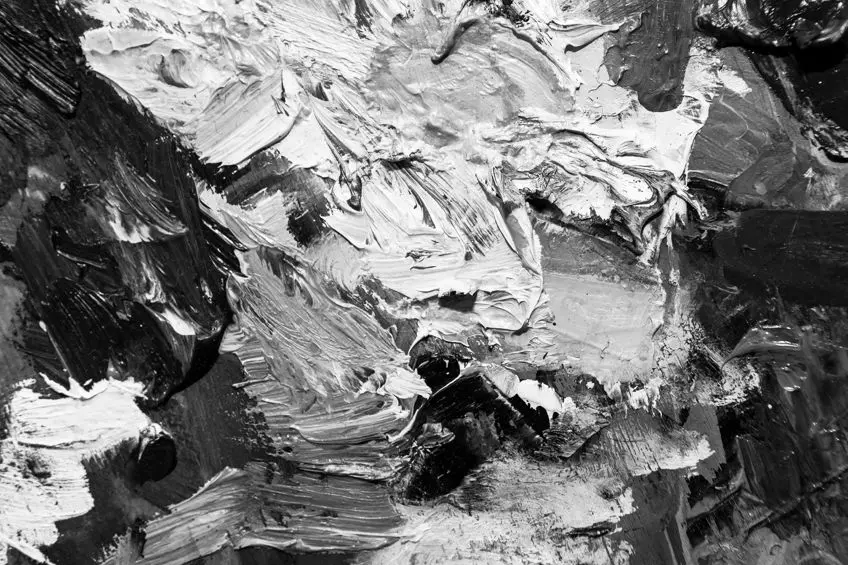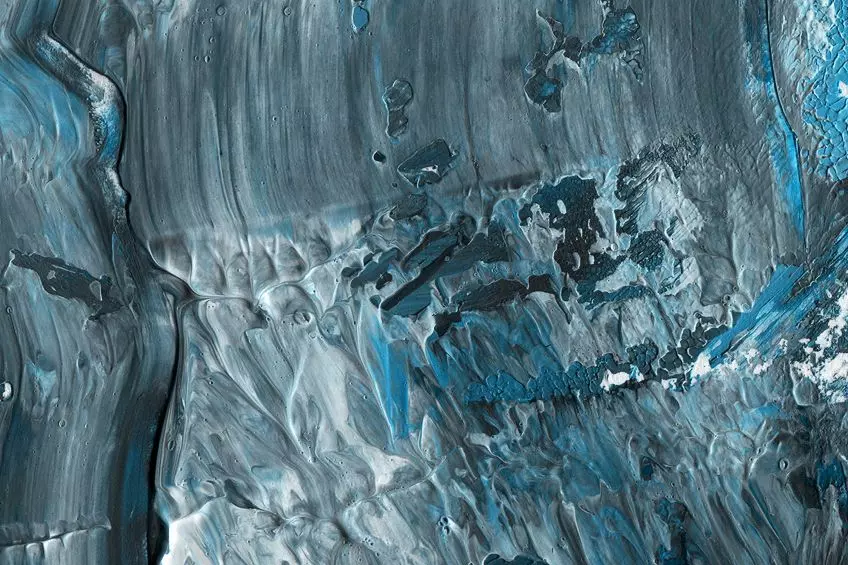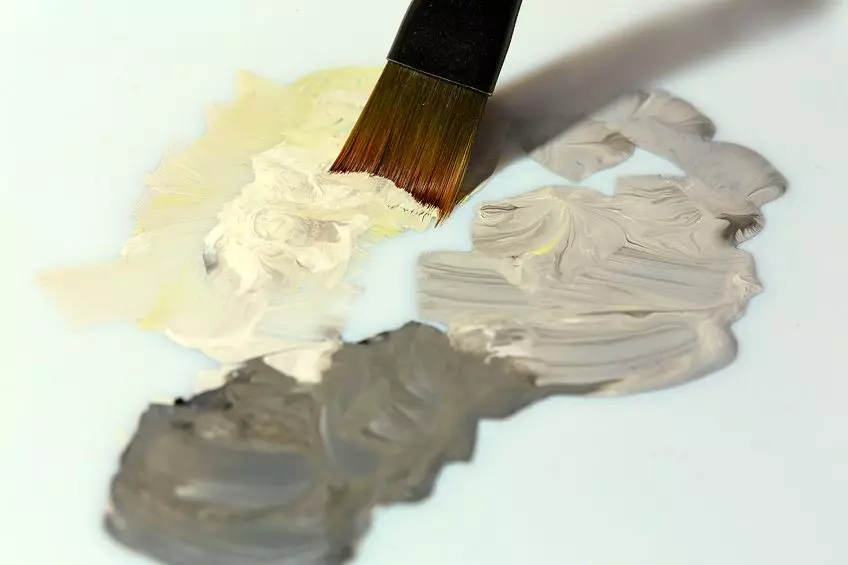Although often overlooked, gray is an indispensable part of any color palette. This soothing neutral shade bridges the gap between light and dark, accentuating the beauty of the colors it accompanies. As artists, we shouldn't settle for pre-made gray paint when we have the power to mix our own unique hues. In this comprehensive color mixing guide, we will explore three methods to create fascinating shades of gray using various color combinations. Are you ready to delve into the enchanting world of gray? Let's get started!
What Colors Make Gray?
There are three main methods to create different gray shades:
Method One: Black and White Combination
The simplest and most common way to make gray is by combining black and white paint. Mixing equal parts of these two colors will yield a neutral gray shade. However, you can adjust the darkness of the gray by adding more or less black to the mix. Remember, it's easier to darken a gray shade by adding black than to lighten it by adding white.
 Image source: sanaulac.vn
Image source: sanaulac.vn
Method Two: Mix Two Complementary Colors
Another popular method is to mix complementary colors to create unique gray shades. For warm grays, combine mauve purple with flax yellow. You can experiment with darker shades like mulberry purple and gold yellow to achieve a deeper warm gray. For cool grays, use cadmium orange with phthalo blue, cobalt blue, or ultramarine blue. Alternatively, try phthalo green with cadmium red or naphthol crimson. The possibilities are endless!
 Image source: sanaulac.vn
Image source: sanaulac.vn
Method Three: Primary Colors Mix
The third method involves mixing the primary colors: alizarin crimson (red), ultramarine blue, and yellow ochre. Begin by combining equal parts of red and blue to create a purple shade. Adjust the warmth or coolness of the gray by adding more red or blue. Finally, add yellow to transform the purple into a unique shade of gray. This method offers great flexibility and control over the final gray tone.
 Image source: sanaulac.vn
Image source: sanaulac.vn
Recipe for How to Mix 25 Different Shades of Gray
Here are some of our favorite gray shades along with their hexadecimal codes and mixing recipes:
- Platinum Gray (#E5E4E2): 9 parts white, 1 part black, less than 1 part blue
- Ash Gray (#B2BEB5): 8 parts white, 1 part black, less than 1 part green
- Gunmetal Gray (#2C3539): 7 parts black, 3 parts white, less than 1 part blue
- Dim Gray (#696969): 1 part black, 1 part white
- Slate Gray (#708090): 6 parts white, 4 parts black, less than 1 part blue
- Smoke Gray (#BEBEBE): 11 parts white, 1 part black
- Shadow Gray (#8B8589): 6 parts white, 4 parts black, less than 1 part purple
- Pearl Gray (#CECECE): 14 parts white, 1 part black
- Thunder Gray (#A9A9A9): 8 parts white, 1 part black, less than 1 part blue
- Steel Gray (#43464B): 6 parts black, 4 parts white, less than 1 part blue
- Charcoal Gray (#36454F): 3 parts black, 1 part white
- Oyster Gray (#D4D4DC): 15 parts white, 1 part black, less than 1 part blue
- Taupe Gray (#8B8589): 5 parts white, 5 parts black, less than 1 part brown
- Fog Gray (#D3D3D3): 16 parts white, 1 part black
- Stone Gray (#928E85): 7 parts white, 3 parts black, less than 1 part brown
- Iron Gray (#43464B): 5 parts black, 5 parts white, less than 1 part blue
- Davy’s Gray (#555555): 1 part black, 1 part white
- Granite Gray (#676767): 2 parts black, 3 parts white
- Pewter Gray (#96A8A1): 6 parts white, 1 part black, less than 1 part green
- Battleship Gray (#848482): 3 parts white, 2 parts black
- Nickel Gray (#727472): 4 parts white, 2 parts black, less than 1 part blue
- Dolphin Gray (#828E84): 3 parts white, 1 part black, less than 1 part green
- Timberwolf Gray (#DBD7D2): 17 parts white, 1 part black
- Anchor Gray (#393B3B): 1 part black, 4 parts white
- Cyber Gray (#A9A9A9): 7 parts white, 1 part black
The Influence of Color Bias
Understanding color bias is crucial when mixing and creating various shades of gray. Color bias refers to the relative warmth or coolness of a color, which affects its overall appearance. For instance, red is warmer than blue, and orange is warmer than purple. These biases play a significant role in color mixing.
 Image source: sanaulac.vn
Image source: sanaulac.vn
Color bias is not only fascinating but also affects the outcome of color mixing. By understanding color biases, you can create vibrant and nuanced shades. For example, when mixing purple, using a cool red and a warm blue yields a vibrant purple, whereas a warm red and a cool blue result in a muddy purple due to the combination of all three primary colors.
Frequently Asked Questions
How Many Shades of Gray Are There?
Contrary to what popular culture may suggest, there are countless different gray hues waiting to be explored. While not all gray shades have official names, the gray spectrum offers a wide variety of possibilities.
What Two Colors Make Gray?
While black and white are the basic combination for gray, there are several other options. Mixing complementary colors like yellow and purple can yield warm grays, while orange and blue create cooler gray shades. Alternatively, you can achieve cool grays by mixing red and green.
Gray is not just a simple mix of black and white; it is a world full of possibilities and subtleties waiting to be discovered. So, put on your artist's hat, grab your paints, and embark on a colorful journey into the realm of gray!









